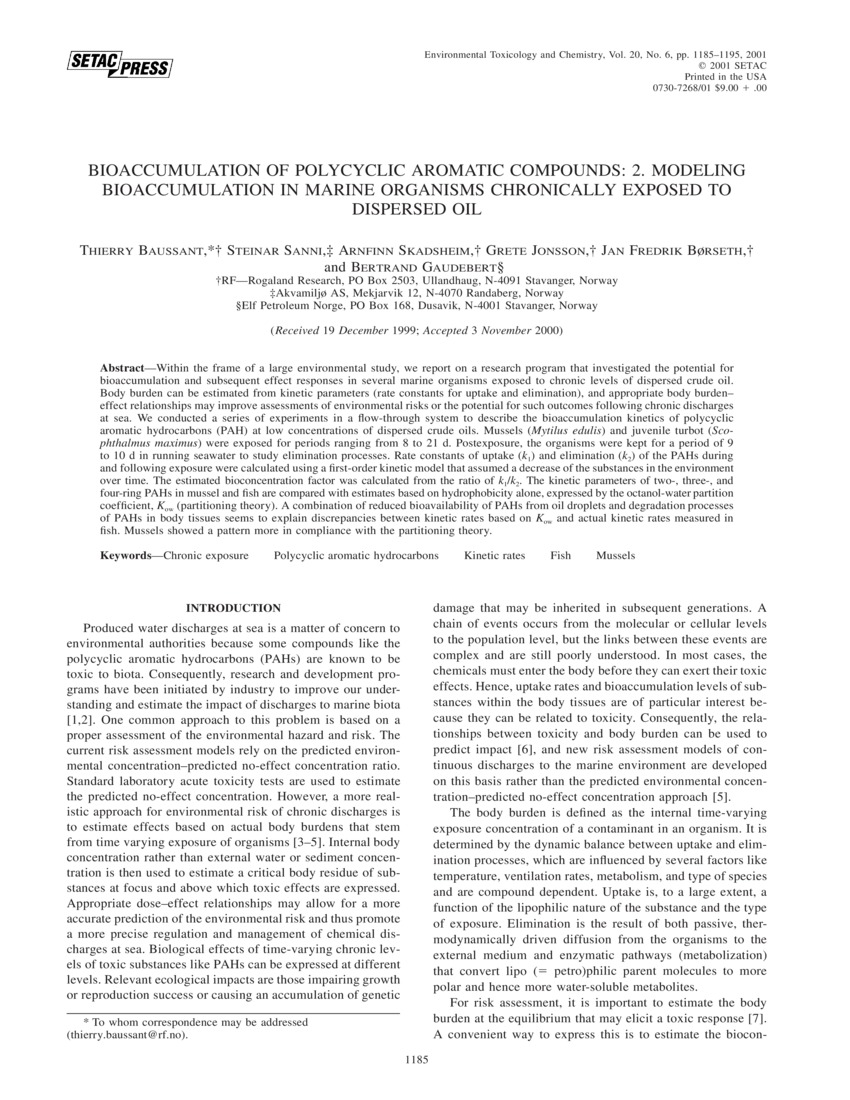Journal Article
AccessBioaccumulation of Polycyclic Aromatic Compounds: 2. Modeling Bioaccumulation in Marine Organisms Chronically Exposed to Dispersed Oil
Within the frame of a large environmental study, we report on a research program that investigated the potential for bioaccumulation and subsequent effect responses in several marine organisms exposed to chronic levels of dispersed crude oil. Body burden can be estimated from kinetic parameters (rate constants for uptake and elimination), and appropriate body burden-effect relationships may improve assessments of environmental risks or the potential for such outcomes following chronic discharges at sea. We conducted a series of experiments in a flow-through system to describe the bioaccumulation kinetics of polycyclic aromatic hydrocarbons (PAH) at low concentrations of dispersed crude oils. Mussels (Mytilus edulis) and juvenile turbot (Scophthalmus maximus) were exposed for periods ranging from 8 to 21 d. Postexposure, the organisms were kept for a period of 9 to 10 d in running seawater to study elimination processes. Rate constants of uptake (k1) and elimination (k2) of the PAHs during and following exposure were calculated using a first-order kinetic model that assumed a decrease of the substances in the environment over time. The estimated bioconcentration factor was calculated from the ratio of k1/k2. The kinetic parameters of two-, three-, and four-ring PAHs in mussel and fish are compared with estimates based on hydrophobicity alone, expressed by the octanol-water partition coefficient, Kow (partitioning theory). A combination of reduced bioavailability of PAHs from oil droplets and degradation processes of PAHs in body tissues seems to explain discrepancies between kinetic rates based on Kow and actual kinetic rates measured in fish. Mussels showed a pattern more in compliance with the partitioning theory.
Publisher - Wiley Interscience
Subjects - Chemical, Polycyclic Aromatic Hydrocarbons (PAH); Bioconcentration
Citation:
